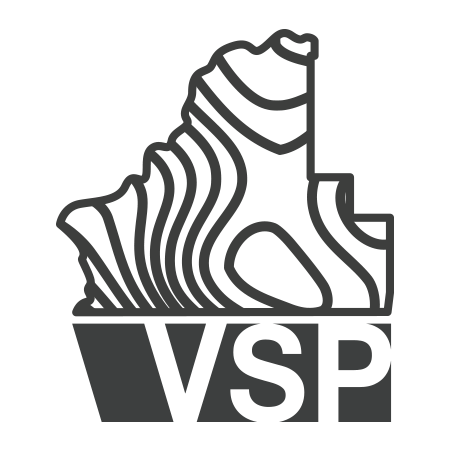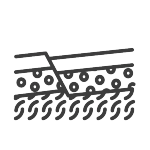
The Voluntary Stewardship Program is a county-led alternative to regulation. Counties develop locally led work plans that use voluntary and incentive based tools to protect critical areas while keeping agriculture viable. Local stakeholders worked together to develop these work plans, monitor progress, and report the results. Under the Voluntary Stewardship Program, Walla Walla County can fulfill Washington State’s Growth Management Act (GMA) requirements for protecting critical areas while maintaining the viability of agriculture.
Walla Walla County opted into VSP in 2012 and in 2016 the legislature fully funded the program for the entire state. The county elected to have the Walla Walla County Conservation District direct the program. The VSP process calls for a local Watershed Work Group to guide the development of the county work plan. Our Work Group has representatives from the agriculture community (including livestock), tribal and environmental representatives, and other stakeholders. The county work plan includes, among other things, a list of the critical areas subject to VSP, an outreach plan, and benchmarks or goals for the county.
Please go to the Resources page to see more details about the Walla Walla VSP Work Plan.

The Voluntary Stewardship Program works under the assumption that complex environmental problems can be solved through voluntary cooperation rather than regulatory mandates.
Participation in VSP is easy and vitally important if ag. producers want to avoid the one-size-fits-all regulations of the Critical Areas Ordinance.
To enroll in VSP, contact the Walla Walla County Conservation District and arrange a meeting time that works for you. District staff use county maps to show producers the critical areas on their property. Using the VSP checklist, a technician will list the conservation practices already being implemented and identify additional practices to further protect the areas. The District can help find cost share opportunities that might be available to implement new conservation practices.
NEW! You can check out the critical areas on your property at this map!
It is important to note that the conservation practices being implemented will be tallied in an aggregate fashion, not by individual landowner, because under VSP, protection and progress are measured on a county-wide basis. No personal identifying information is ever reported without express permission of the landowner.
What Critical Areas Are On Your Property?

Wildlife Habitat
Protection of fish and wildlife habitat critical areas is guided by the Washington State Department of Fish and Wildlife’s (WDFW) Priority Habitats and Species list. Local priorities include wintering habitat for birds of prey, unique habitats within the county, habitat for neotropical birds, and more. Among other things, protection of these critical areas aims to increase fish habitat and maintain forest buffers.

Wetlands
Wetlands are areas saturated by surface or groundwater that support vegetation adapted for life in these conditions. Distinguishing between natural and man-made wetlands can be difficult but is important to determine. The Walla Walla Work Plan suports producers in finding management alternatives for farming saturated field depressions and developing projects to improve wetlands.

Frequent Flooding
Lands in the floodplain subject to one percent or greater chance of flooding in any given year are considered frequently flooded areas. These areas perform important hydrologic functions but also present a risk to persons and property. Flood events are increasing in frequency, making it ever more pressing to restore stream and floodplain function.

Aquifer Recharge
Areas that have a critical recharging effect on aquifers used for potable water are labeled as critical areas under VSP. Areas that are subject to contamination or are susceptible to reduced recharge are particularly important. Groundwater levels are declining, leading to increasing stress on already limited resources. VSP can work to mitigate these effects by, among other things, developing local water plans and implementing shallow aquifer recharge projects.

Geologic Hazard
Geologically hazardous areas include areas that are susceptible to erosion, sliding, earthquake, or other geological events. They can be broken down into four categories: wind erosion, water erosion, seismic/liquefaction risk, and landslide risk.
Frequently Asked Questions
Are farmers required to participate?
No. Voluntary participation is a key element of VSP. There are no requirements for individuals; rather, there is a requirement that the county meet the benchmarks. If a majority of the area farmers participate, then the goals will be met.
Are there benefits to individual farmers?
Of course! VSP also requires that the viability of agriculture be maintained. Under VSP, the future of farming is more secure in our county, because it sets forth as a given that the viability of agriculture is just as important a consideration as protection of critical areas.
Are there consequences if the county doesn’t meet its goals?
Yes. Under VSP, the county, through the Watershed Work Group, will be required to implement the plan developed by the VSP work group. Over time, progress towards meeting the benchmarks will be tracked. If the county fails to meet the benchmarks, the county must revert to the heavy regulation and enforcement of the Growth Management Act and the Critical Areas Ordinance.
How is the Conservation District involved?
Walla Walla County commissioners selected the district as the lead agency to direct the VSP process. District staff will be facilitating the work under the direction of the local work group.
How is VSP performance reported?
The conservation practices being implemented will be tallied in an aggregate fashion, not per individual, because under VSP, protection and progress are measured on a county-wide basis. No personal identifying information is ever reported. For example, in 2011 (the baseline year) there were 3140 acres of riparian forest buffer documented. The protection goal for this critical area (Fish and Wildlife Habitat) is no net loss over 10% from 2011 to 2021. As long as the county is able to demonstrate at least 2,826 acres of riparian buffers remain (that is, no more than than 10% lost) this goal of the Work Plan will be met. The process is simple and participation is vitally important if ag. producers want to avoid the one-size-fits-all regulations of the Critical Areas Ordinance.
